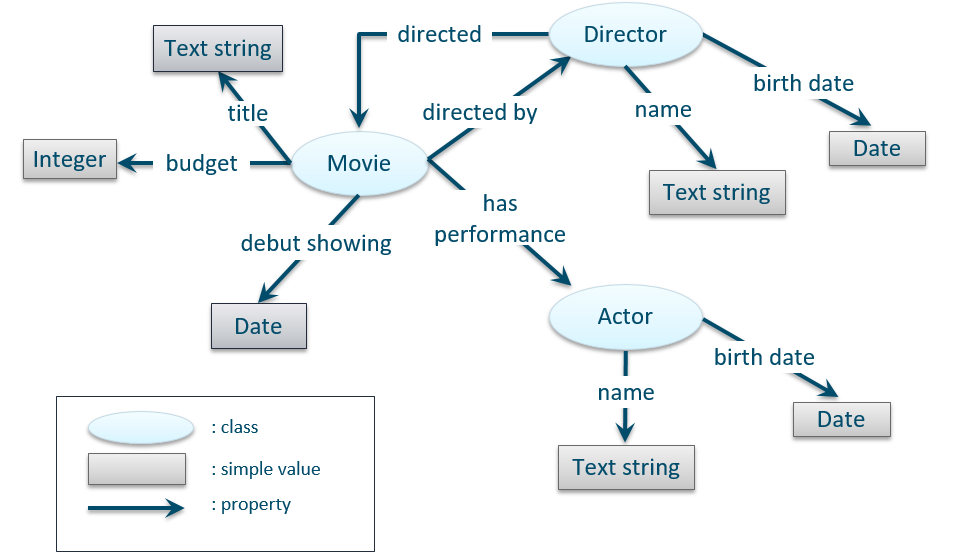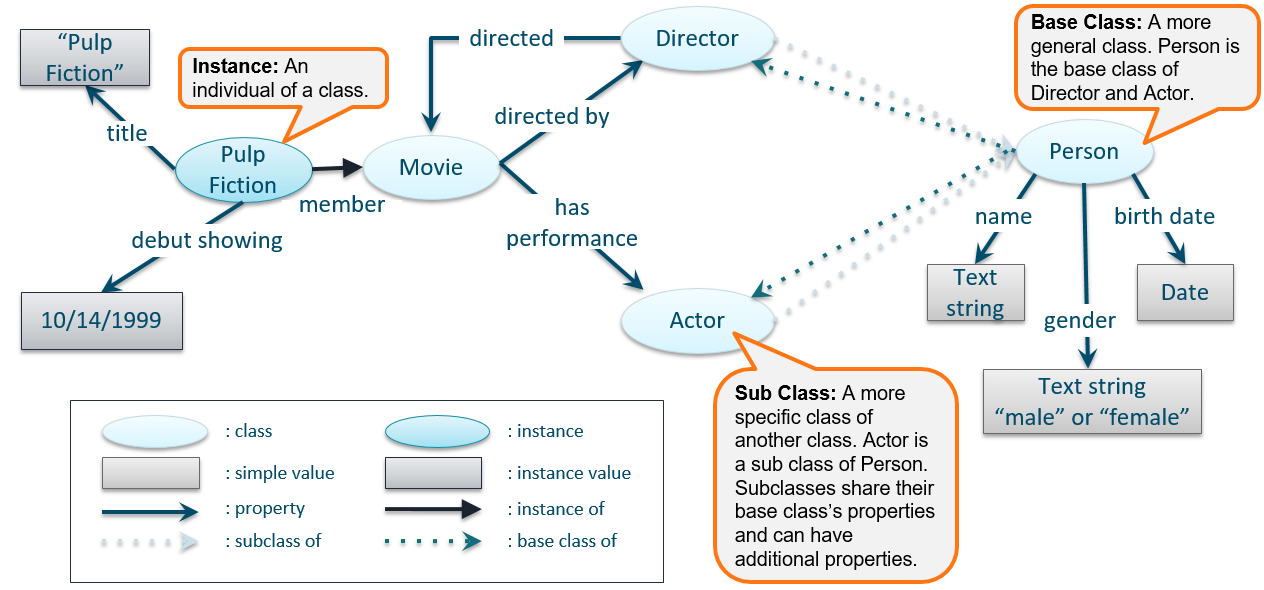Introduction to Models
This topic provides a brief introduction to data models and defines the terminology that is used in Anzo.
The following image shows a portion of the model for a data set that captures sales activity for a fictional website where people buy and sell tickets for sporting events, shows, and concerts.

Class
Models are made up of classes. Classes describe a concept or a group of related objects. For example, the model above contains events, dates, categories, sales, users, and listings classes.
Property
Properties are attributes that describe the data in a class. For example the users class has properties such as firstName, lastName, and personID. The events class has properties such as eventName, dateID, and startTime.
Anzo uses two kinds of properties:
- Data property: Relates a class to a simple value. For example, in the users class, the firstName and lastName properties relate to simple values.
- Object property: Relates a class to another class. For example, the listID property relates to the sales and listing classes.
Property Type
The specific type that can be used as the value of a property. Also known as "range."
Instance
Instances are concrete occurrences of a class. For example, an event's name is an instance of the events class.
Simple value
Also known as literals. For example:
- Numbers (for example, 15, -9, 10.35)
- Text strings (for example, "Jane Doe" or "a long description")
- Dates and times (for example, "13-Dec-2008", or "April, 2017")
- Boolean (true or false)
Type
Either a class or a simple value.
Example: A Film Ontology
The example below shows classes, properties, and instances in a worksheet.

In a model, you can define relationships between the properties, instances, and classes.

Instances, Subclasses, and Base Classes
In the example below, "Pulp Fiction" is an instance of the Movie class. Person is the more general class, or base class, for Actor and Director. And Actor and Director are subclasses of Person.
